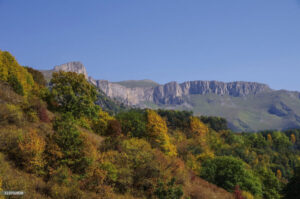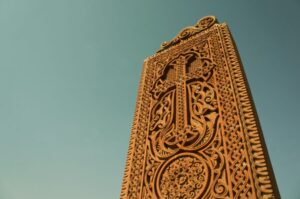Armenia, a country rich in history and culture, is home to numerous captivating sights. Among these, Gyumri stands out as a city that has preserved the essence of Armenian culture through its historic district. Located in the Shirak Province, Gyumri is the second-largest city in Armenia and offers a unique glimpse into the country’s past.
A Walk Through Time
Stepping into Gyumri’s historic district is like taking a walk through time. The district is a living testament to the resilience and spirit of the Armenian people. It is a place where traditional architecture, cobblestone streets, and ornate buildings blend harmoniously to create a captivating atmosphere.
One of the highlights of the district is the Sev Berd Fortress, which dates back to the 18th century. This imposing structure served as a defense fortress and played a significant role in protecting the city from invasions. Today, it stands as a symbol of Gyumri’s rich history and offers breathtaking views of the surrounding area.
Architectural Marvels
Gyumri’s historic district is a treasure trove of architectural marvels. The district is home to numerous churches, each with its unique design and story. One such example is the Church of the Holy Saviour, also known as the Cathedral of Gyumri. Built in the mid-19th century, this magnificent church showcases a blend of Armenian and Russian architectural styles.
Another architectural gem in the district is the Dzitoghtsyan Museum of Social Life and National Architecture. Housed in a beautifully restored 19th-century mansion, the museum provides visitors with a glimpse into the daily life and traditions of the Armenian people. From traditional costumes to household items, the museum offers a comprehensive view of Armenian culture.
Artistic Expression
Gyumri’s historic district is not only a testament to architectural brilliance but also a hub of artistic expression. The district is dotted with art galleries and studios, showcasing the works of local artists. One such gallery is the Aslamazyan Sisters’ House-Museum, dedicated to the renowned Armenian artists Mariam and Yeranuhi Aslamazyan.
Visitors can explore the museum and admire the sisters’ paintings, sculptures, and other artistic creations. The museum also hosts temporary exhibitions, providing a platform for emerging artists to showcase their talent.
Preserving the Essence of Armenian Culture
Gyumri’s historic district plays a vital role in preserving the essence of Armenian culture. It serves as a reminder of the country’s rich heritage and offers a glimpse into the traditions and customs that have shaped the Armenian identity.
Efforts have been made to restore and preserve the district’s historic buildings, ensuring that future generations can experience the charm and beauty of Gyumri’s past. These preservation initiatives not only protect the physical structures but also contribute to the revitalization of the local community.
Furthermore, the district serves as a cultural hub, hosting festivals, concerts, and other events that celebrate Armenian art, music, and dance. These events not only attract visitors from around the world but also provide a platform for local artists to showcase their talent.
Conclusion
Gyumri’s historic district is a true gem in the heart of Armenia. It offers a unique opportunity to immerse oneself in the country’s rich history and culture. From its architectural marvels to its vibrant artistic scene, the district encapsulates the essence of Armenian heritage.
Visiting Gyumri’s historic district is like stepping into a bygone era, where time seems to stand still. It is a place where the past and present coexist, creating an enchanting atmosphere that leaves a lasting impression on all who visit. So, if you’re planning a trip to Armenia, make sure to include Gyumri and its historic district on your itinerary.



